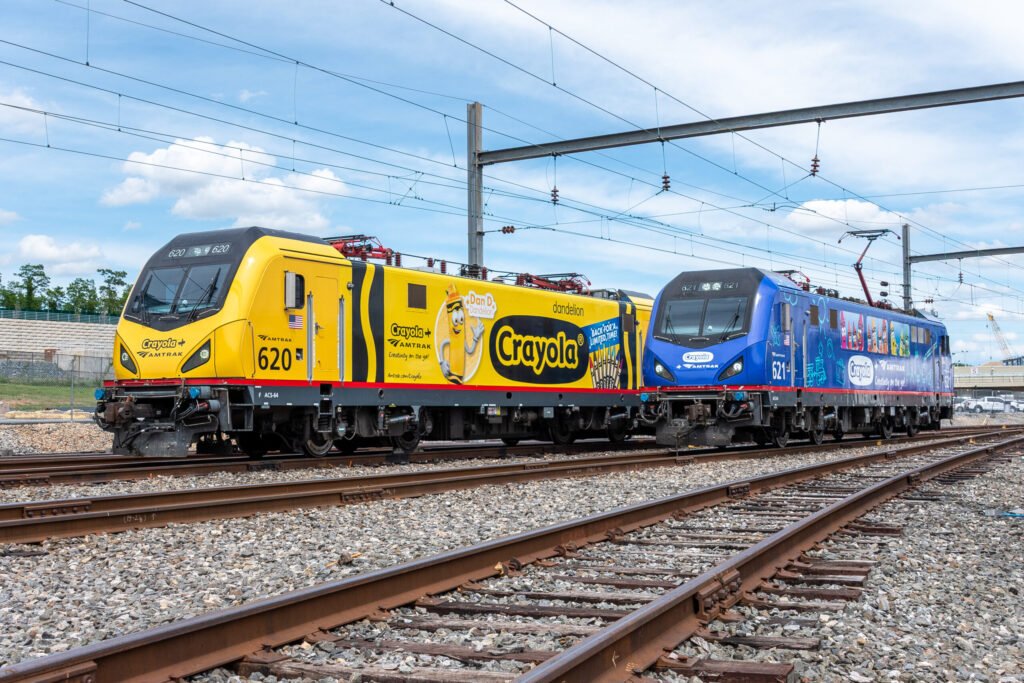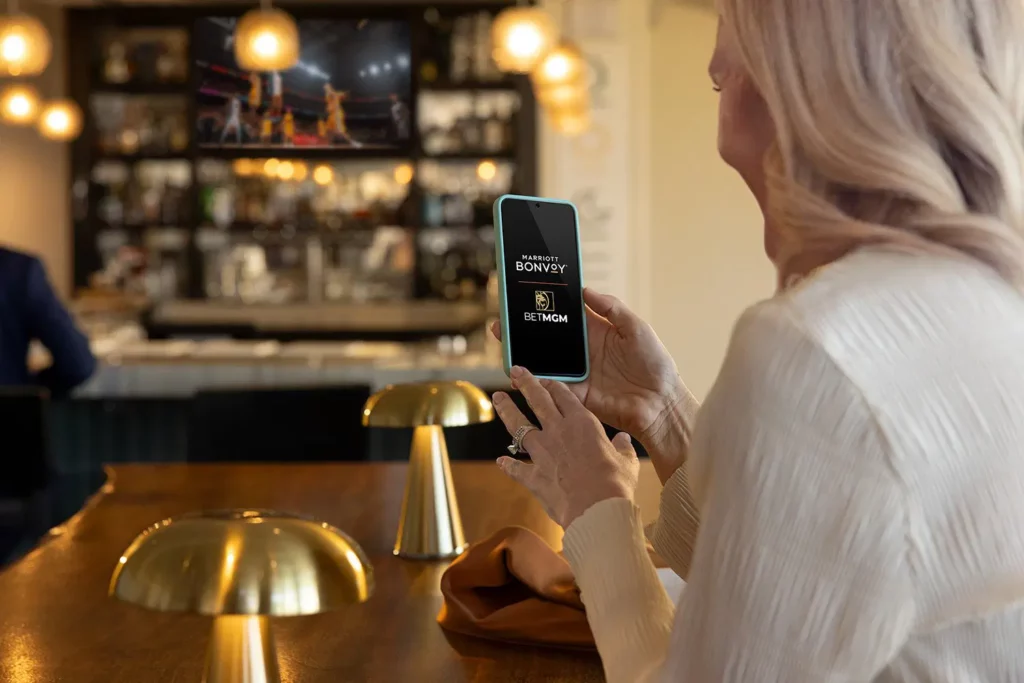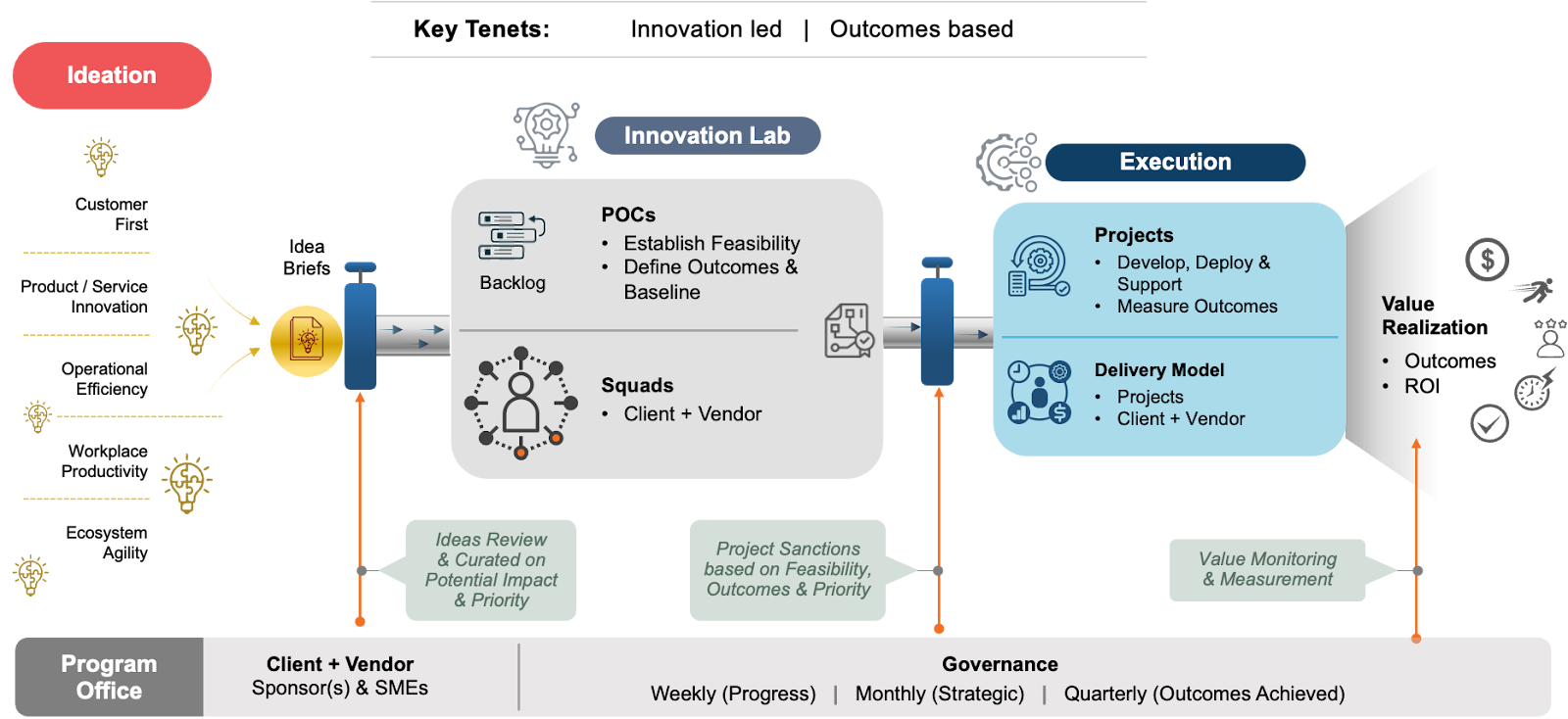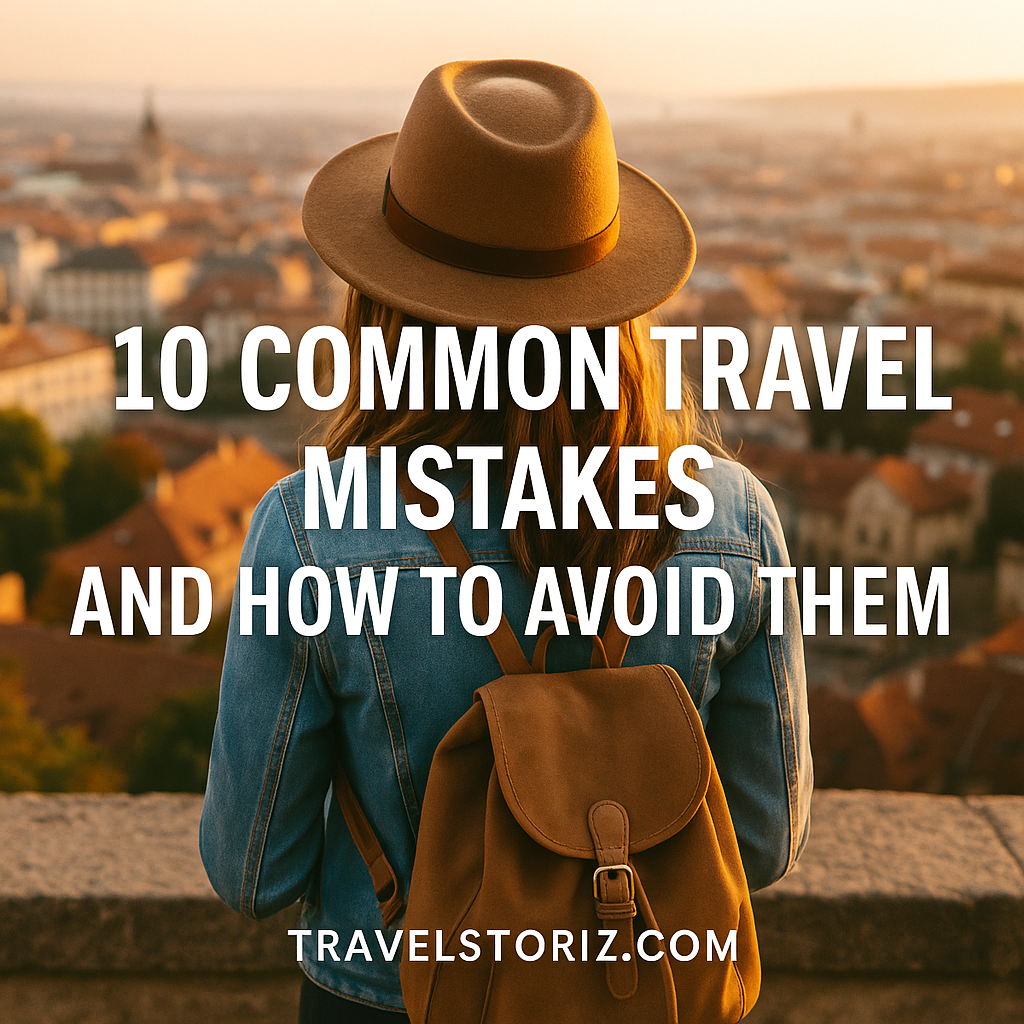Brand Stories
It’s hot budget summer for travel brands

As the summer season heads into its second half, leading to the Labor Day holiday, U.S. consumers are eager to hit the road. But travelers are conscious of both costs and security, and the trends are reflected in the marketing efforts to reach them.
Americans are factoring in the economy when budgeting for travel, a recent Harris Poll found summer travelers are price conscious, increasingly choosing hotels and flights based on price, trading flying for driving and finding other ways to stretch their travel dollar.
“Value is a loaded word these days, across many categories,” said Geoffrey Director, EVP, Strategy of Manifest. The Chicago-based creative and content agency has worked with Alamo Rent A Car, Ritz-Carlton and other travel brands.
It’s not so much that consumers are pinching pennies, he said: “It’s that they want to make sure their purchases are worth it.”
A report from Deloitte was very direct in its advice: “Travel providers should plan to be nimble this summer,” the analysts recommended. “Timely and targeted deals and offers can help reach travelers at the right moment and attract any incremental dollars they may be willing to spend.”
Marketers are taking the advice. The vacation rental site VRBO added a Last Minute Deals function this summer that narrows down searches to properties offering deals and labels properties with a “Last minute” badge showing the amount travelers can save.
“Last Minute Deals give families a great way to save on summer vacation, while helping hosts keep their properties booked year-round,” said Larry Plawsky, General Manager at Vrbo, in a statement. “It’s a win-win.”
Still hitting the road
In spite of rising prices, the lure of the road hasn’t dimmed. A survey from Enterprise found about two thirds of Americans started the summer planning to travel at least 50 miles away from home. The car rental company launched its first global ad campaign on Memorial Day weekend, the typical start of the summer travel season.
Travel companies are leaning heavily on discounts to bring in families, which may put off big-ticket trips because of the economic uncertainty. Amtrak—which has been increasingly leveraging cost and safety issues to drive travelers to choose the rails over air travel—launched a partnership with Crayola this summer, targeting family travel. The effort includes children-travel-free offers, free admission for kids to The Crayola Experience and locomotives wrapped in Crayola livery.
“Between special savings and imaginative locomotive designs, we are excited to foster extraordinary journeys and inspire creativity across America,” said Jessica Davidson, Amtrak’s vice president of digital and brand marketing.
U.S. travelers are prioritizing domestic travel due to both budget and political concerns. A survey from U.S. News & World report found 72 percent of Americans have changed their travel plans because of rising prices, and 23% plan to travel domestically rather than internationally. Indeed, 47 percent of U.S. citizens are worried how they will be perceived when traveling abroad, according to the survey.
Premium travelers are not cancelling, but they are shopping around, said Savannah McGusion, Director Experience Strategy, at RAPP, which works on the American Express’ Travel & Leisure services line. She noted that Amex is reinforcing its value-driven messaging focusing on enhancements such as late checkout and room upgrades, rather than purely aspirational themes.
“Instead of changing destinations for economic reasons, (premium travelers) often take a hybrid luxury approach by adjusting their hotel selection, mixing premium and standard accommodations, or choosing different airfare classes within a single trip,” she said. “However, political factors are prompting more international cancellations, and we anticipate this trend will continue.”
Destination marketing organizations are taking advantage of the shift to homegrown destinations, said Manifest’s Director. The organizations are engaging in what he called “hyper-local storytelling,” focusing not only on the state or city, but down to individual neighborhoods, cultural moments, and local-owned businesses. They are relying on these efforts to counteract the loss of travelers from Canada or Mexico turned down by current political friction, he said, “betting this can help attract visitors but also extend the average trip duration.”

Personal passions vs. destinations
While relaxing and visiting with friends and family are still the top reasons for travel according to most surveys, tourists are also increasingly focused on experiences built around their interests—food and wine, sports, wellness or entertainment. One survey found 77% of travelers were planning trips around a destination’s food and restaurant choices. The poll from Chase Travel found 55% were eager to travel to Italy for pasta, and 45% were looking forward to going to France for the wine.
“At Chase Travel, we’re witnessing a growing demand for authentic, immersive experiences, whether it’s exploring a destination’s culinary scene, wellness offerings, or cultural events,” said chief marketing officer Wendy Vividor. “In response, we’ve been launching more Sapphire Reserve Trips designed by Chase Travel, crafted to create unforgettable journeys that align with our cardmembers’ passions.”
For example, she noted Chase recently offered a trip to London that included a private tour of the Victoria and Albert Museum and personal shopper service at Harrod’s department store. And it is offering a trip to Oaxaca in Mexico for the Day of the Dead celebration that focuses on dining experiences and cultural immersions.
“There is a clear shift toward travel centered on personal passions versus destination-driven,” said RAPP’s McGusion. As an example, she noted that Airbnb recently relaunched its Airbnb Experiences program, offering travelers authentic local activities.

All sorts of interests are being targeted by travel brands. Marriott Bonvoy, the hotel company’s loyalty program, is partnering with BETMGM, the sports gaming arm of MGM Resorts, to launch a promotion centered on fantasy football. The effort includes a sweepstakes offering a fantasy football draft weekend in Las Vegas for the winner and 11 guests over Labor Day weekend, hosted by former pro quarterback Matt Ryan.
“BetMGM and Marriott Bonvoy are an unrivaled duo when it comes to delivering unique opportunities for sports fans,” said chief revenue officer Matt Prevost, in the announcement. “The Vegas Fantasy Draft with Matt Ryan is another example of how we are creating truly exceptional experiences for BetMGM players.”
Entertainment fans are also being targeted by destinations promoting their roles as backgrounds in popular TV shows and movies. For example, Discover Ireland, the Irish tourism arm, is pushing the locations of the Netflix series Wednesday to travelers in advance of the show’s second season premiere.
“Experiential add-ons aren’t just for luxury segments anymore,” said Manifest’s Director. Even as budget and mid-tier travelers shop around, “they still crave enriching moments,” he said. Brands are responding by offering bundles and tiers of experiences, more accessible wellness programming and forming partnerships with local creators to create more cost-effective offers, he said.
Research shows consumers want more out of travel than just to go somewhere different and relax, the Director said.
“Without a doubt,” he said. “While Americans are more comfort-driven than ever in their leisure time decision making, they also simply can’t sit still.”
Brand Stories
CheQin.ai sets a new standard for hotel booking with its AI capabilities: empowering travellers to bargain, choose the best, and book with clarity.

The global hotel booking experience has long been defined by routine: scroll endlessly, compare rates, hope for transparency, and settle for what’s available. For many, the process feels more transactional than empowering. But a shift is emerging in the hospitality sector, one that aims to put genuine control and clarity back in the hands of both guests and hoteliers. At the forefront is CheQin.ai, a platform fundamentally rethinking the way hotels and travelers connect.
From Passive Searching to Active Requesting
Unlike conventional platforms that require users to sift through dozens of listings, CheQin.ai introduces a model where guests articulate their exact requirements, room preferences, amenities, stay dates and invite hotels to respond with tailored offers in real time. This guest-driven approach replaces guesswork with choice and ensures travelers receive the most relevant options without the fatigue of endless scrolling. For groups, families, or those with specific needs, the process is refreshingly direct.
Transparent Pricing – No Surprises, No Hidden Fees
For travelers, hidden fees and opaque terms remain persistent frustrations. CheQin.ai addresses these head-on, insisting that all offers are all-inclusive: the price a guest sees is the price they pay. The platform’s zero-commission model enables hotels to pay no listing or booking fees and fosters a healthier marketplace, encouraging hoteliers to compete on genuine value, not marketing budget or hidden margins.
A Level Playing Field for Competitive Bargaining
CheQin.ai reframes hotel booking as a win-win exchange. Once a request is posted, hotels can view competitor offers and adjust their pricing in real time. This transparent competition creates an environment where guests receive up to five of the lowest, direct offers, each one clear, competitive and tailored to their needs. For hoteliers, it’s an opportunity to fill rooms and engage directly with guests, minus the overhead of traditional commission structures.
Technology That Enables Human Choice
At its core, CheQin.ai employs technology not as a substitute for service, but as an enabler of better decision-making. Instant notifications, direct hotel-guest communication, and streamlined booking processes ensure that the platform remains efficient and intuitive. Features such as bulk bookings, flexible stay durations and day-use options reflect a nuanced understanding of modern traveler requirements.
Reflecting Broader Industry Trends
The emergence of platforms like CheQin.ai is emblematic of a wider movement within hospitality: a demand for flexibility, fairness and transparency. The traditional, one-size-fits-all approach is giving way to systems where user agency is prioritized and where competition among providers ultimately benefits the end user.
Clarity and Control for All
For the modern traveler and hotelier alike, CheQin.ai sets a compelling new benchmark. Guests are empowered to bargain and select from transparent, real-time offers; hoteliers engage with motivated travelers in a commission-free environment. The result is a marketplace where both sides participate on equal terms and where clarity so often missing in hotel bookings becomes standard.
Disclosure: The author has no financial interest in CheQin.ai or any companies mentioned in this article. This article is based on independent analysis and observations of current trends in the hospitality industry.
Brand Stories
Navigating Challenges and Driving Success, ETCIO

The 2021 collapse of ‘Zillow Offers’ serves as a stark reminder of what can go wrong when AI is deployed without the right safeguards. Built to automate home buying, Zillow’s algorithms frequently misjudged market conditions – causing the company to overpay for thousands of homes. With unsold inventory piling up, Zillow took nearly a billion dollars in losses, laid off 2,000 employees, and eventually shut down the program.
While this played out in the consumer space, similar risks are surfacing inside enterprise AI pilots across banking, pharma, and manufacturing where agentic models are being rushed into production without the governance. However, real-world adoption of Agentic AI presents a complex landscape. What looks promising in a lab can fall apart in production. The gap between PoC and scalable success remains wider than most leaders realize.
The AI adoption journey
According to Gartner’s 2024 survey, a striking 80% of Generative AI proof of concepts (PoCs) fail to make it to full-scale production. Most enterprises begin their AI journey by collaborating with existing technology vendors and engaging strategy consulting firms to craft a tailored AI roadmap. This typically leads to the identification of a few proof-of-concept (PoC) initiatives aimed at testing AI’s viability within specific business processes.
However, the initial excitement often gives way to sobering realities. One of the first hurdles is accuracy and efficacy. Off-the-shelf AI solutions, regardless of the underlying large language models (LLMs), frequently deliver only 75-80% accuracy when deployed. For AI to be truly useful in business-critical scenarios, enterprises must aim for 95% or higher accuracy. Achieving this requires addressing both data quality and algorithmic sophistication – a dual challenge that many organizations underestimate.
The data dilemma
A major barrier to effective AI implementation is the nature of enterprise data. Historically, data has been curated for human consumption – structured to support manual analysis and decision-making. AI, on the other hand, thrives on digitally accessible, high-quality data that can fuel autonomous decision-making. This mismatch creates what is known as the “Data for AI” problem. Enterprises must invest in digitalizing their processes, segmenting truly digital data, and building robust data pipelines. Ensuring data quality, traceability, and lineage is essential for developing trustworthy AI systems. Depending on an organization’s data maturity, this transformation can be both time-consuming and costly.Governance and responsibility
Another critical challenge is establishing a governance framework for autonomous AI agents. While “agentifying” business processes can empower human workers and enhance productivity, it must be done responsibly. Without proper oversight, AI decisions can lead to unintended consequences. This is where Responsible AI comes into play. Enterprises must implement guardrails that ensure AI decisions are observable, auditable, and aligned with ethical standards. Continuous monitoring by human decision-makers is essential to maintain control and accountability.
A real-world success story: AskChemille
A standout example of Agentic AI in action is AskChemille, developed by a leading chemical manufacturer to transform how prospects engage with complex polymer solutions. In just six months and with less than half of a full-time equivalent’s cost, the company deployed an AI-powered search-and-answer experience designed to achieve two primary goals: reduce a traditionally 12-month sales cycle that relied heavily on experienced chemistry SMEs, and promote a self-service portal for prospects seeking tailored, expert-level guidance.
Powered by a Small Language Model (SLM) trained to match the expertise of a PhD chemist, AskChemille can accurately answer technical questions and recommend customized solutions, delivering a 75% improvement in sales cycle time and achieving a full ROI within the first quarter of deployment. This showcases how Agentic AI can leapfrog traditional knowledge transfer processes and deliver immediate, high-impact business value by autonomously adapting to user needs and driving outcomes.
The ART of AI success
To navigate these challenges, enterprises should adopt the ART framework focusing on Accuracy, Responsible, and Trustworthiness for AI. These three pillars form the foundation of successful AI implementation. Ignoring any of them introduces significant risk and undermines the potential benefits of AI. To accelerate AI adoption and maximize its impact, organizations should consider the following strategic actions:
- Educate Leadership on AI’s True Potential
- Move beyond the hype around LLMs and chatbots.
- Emphasize AI’s role in scaling human capabilities and enhancing decision-making.
- Integrate machines as trusted collaborators in driving informed decisions
- Invest in Data Maturity
- Digitalize core processes and identify gaps in data readiness.
- Build infrastructure that supports high-quality, AI-ready data.
- Define AI Vision Through Business Outcomes
- Align AI initiatives with key growth, profitability, and operational metrics.
- Ensure AI efforts are outcome-driven, not technology-driven.
- Focus on interoperability and orchestration of agents.
- Articulate ART Goals
- Customize agentic experiences based on business needs.
- Define trust goals, talent requirements, and observability standards.
- Involve business leaders in AI governance through councils and cross-functional teams.
3 Steps to Productionizing AI
To move from PoC to production, enterprises should build on the ART framework and follow three essential steps:
Step 1: Pilot with purpose: Anchor your use case to a clearly defined business outcome.
Step 2: Pick the right tech stack: Choose a platform that supports agent interoperability and future scalability.
Step 3: Co-create for value: Partner with a service provider who can share ownership of value realization. (See sample process below.)
Agentic AI holds immense promises for enterprises, but its adoption requires a thoughtful, strategic approach. By focusing on accuracy, responsibility, and trustworthiness, organizations can unlock AI’s full potential while mitigating risks. The journey may be complex, but with the right vision and investments, enterprises can build intelligent systems that truly empower their workforce and drive sustainable growth.
The author is Uday Hegde, Co-founder & CEO, USEReady
Disclaimer: The views expressed are solely of the author and ETCIO does not necessarily subscribe to it. ETCIO shall not be responsible for any damage caused to any person/organization directly or indirectly.
Brand Stories
10 Common Travel Mistakes in India—And How Smart Travelers Avoid Them
India is a country that bewilders and bewitches in equal measure.

A land of layered history, spiritual energy, chaotic beauty, and heart-shaking hospitality.
But it’s also a country that demands presence, flexibility, and preparation—especially from travelers who think they can wing it.
Whether you’re an international visitor heading to the Taj Mahal or a domestic explorer off to the northeast, India rewards the mindful and humbles the overconfident.
At travelstoriz.com, we’ve walked the crowded bazaars, navigated late trains, and made plenty of mistakes—so you don’t have to.
Here are 10 of the most common travel mistakes in India—and how to travel smarter.
1. Underestimating Time and Distances
The mistake:
Google Maps says 3 hours. You plan for 3 hours. You end up stuck in traffic, delayed by fog, or sidetracked by a chai break with a stranger. In India, 3 hours often means 5.
The fix:
Always buffer extra time into your itinerary. When planning intercity travel, assume +20% variance minimum, especially in monsoon or festival seasons.
Example:
A 250 km drive from Jaipur to Jodhpur may look like a half-day journey. In reality? 6–7 hours with rural traffic.
2. Booking Last-Minute Trains or Buses
The mistake:
Assuming you can get a ticket the day before. IRCTC trains are in high demand—especially for AC classes and Tatkal tickets.
The fix:
Plan your intercity travel at least 15–30 days in advance, especially during holidays like Diwali or school vacations. Use apps like IRCTC Rail Connect or ConfirmTkt to track availability and set alerts.
3. Ignoring the Power of Offline Access
The mistake:
Relying solely on data. But suddenly—no signal.
In rural India, internet coverage drops in and out like power during a thunderstorm.
The fix:
Download offline Google Maps, carry printed copies of tickets, and keep hotel addresses saved in your phone Notes app.
Bonus:
Carry a power bank—it’s not optional, it’s essential.
4. Not Checking Festival or Strike Schedules
The mistake:
You arrive to find everything shut—because it’s a local strike (bandh) or a 5-day temple festival you didn’t know about.
The fix:
Check the local calendar before traveling—especially in Kerala, West Bengal, and Tamil Nadu, where festivals dominate public life.
Smart move:
Ask hotel staff or locals about upcoming closures—they know better than Google.
5. Packing Like You’re Going Abroad
The mistake:
Overpacking formal clothes, too many shoes, or giant suitcases that don’t fit in tuk-tuks or train compartments.
The fix:
Pack light, layerable clothing, and always carry a scarf or shawl—for temple visits, sun protection, or chilly train rides.
Footwear? One walking pair + one slip-on (for temples).
6. Not Using Local Transport Smartly
The mistake:
Assuming Uber works everywhere—or worse, hopping into taxis without negotiation.
The fix:
In metros, use metro cards (Delhi, Mumbai, Bangalore). In smaller towns, auto-rickshaws and bike taxis (Rapido) are lifesavers.
Pro tip:
In places like Goa or Manali, rent a scooter with a helmet—it saves time and gives you local freedom.
7. Eating Carelessly in the Name of “Authenticity”
The mistake:
Jumping into spicy street food without preparing your gut—or worse, drinking tap water.
The fix:
Eat at busy, well-rated local joints. Carry ORS packets, and always drink bottled water (check the seal).
Smart tip:
Start your trip with simple vegetarian meals. Let your stomach adjust.
8. Assuming Everyone Speaks English
The mistake:
Expecting your cab driver in Bihar or tea shop owner in the hills of Coorg to understand your English.
The fix:
Learn a few Hindi phrases or download a translation app.
Better yet, use gestures and smiles—they go a long way.
9. Forgetting the Power of Cash
The mistake:
India is going digital fast, but not all towns are UPI-ready.
Many guesthouses, vendors, and autos still prefer cash—especially under ₹100.
The fix:
Carry ₹2000–₹3000 in small notes (₹10, ₹20, ₹50, ₹100). Avoid ₹2000 bills—they’re often refused.
10. Rushing the Itinerary
The mistake:
Trying to cover Delhi–Agra–Jaipur–Varanasi–Rishikesh in 5 days.
You’ll spend more time in transit than in temples.
The fix:
India is dense with experience.
Pick fewer places. Spend more time. Allow for spontaneity. That’s where the magic is.
In India, Imperfection Is the Experience
India isn’t designed to be convenient. It’s designed to be immersive—a full-body, full-soul experience. You’ll make mistakes. You’ll get delayed. You’ll get surprised. But if you stay open, humble, and prepared—you’ll come home with stories, not just photos. So pack your curiosity. Book your train early. Keep your plans loose and your heart ready.
Tip of the Day – Take Control of Your Stay with cheQin.ai
For travelers who value autonomy and seamless service, cheQin.ai lets you post your hotel needs and instantly receive tailored offers from multiple hoteliers—no endless searching, no middlemen. Unlike traditional platforms, cheQin.ai puts guests in charge, ensuring real-time responses, transparent pricing and a contactless, guest-first experience every time.
-

 Brand Stories5 days ago
Brand Stories5 days agoBloom Hotels: A Modern Vision of Hospitality Redefining Travel
-

 Brand Stories5 hours ago
Brand Stories5 hours agoCheQin.ai sets a new standard for hotel booking with its AI capabilities: empowering travellers to bargain, choose the best, and book with clarity.
-

 Destinations & Things To Do6 days ago
Destinations & Things To Do6 days agoUntouched Destinations: Stunning Hidden Gems You Must Visit
-

 AI in Travel6 days ago
AI in Travel6 days agoAI Travel Revolution: Must-Have Guide to the Best Experience
-

 Brand Stories3 weeks ago
Brand Stories3 weeks agoVoice AI Startup ElevenLabs Plans to Add Hubs Around the World
-

 Brand Stories2 weeks ago
Brand Stories2 weeks agoHow Elon Musk’s rogue Grok chatbot became a cautionary AI tale
-

 Asia Travel Pulse3 weeks ago
Asia Travel Pulse3 weeks agoLooking For Adventure In Asia? Here Are 7 Epic Destinations You Need To Experience At Least Once – Zee News
-

 Destinations & Things To Do1 hour ago
Destinations & Things To Do1 hour agoThis Hidden Beach in India Glows at Night-But Only in One Secret Season
-

 AI in Travel3 weeks ago
AI in Travel3 weeks ago‘Will AI take my job?’ A trip to a Beijing fortune-telling bar to see what lies ahead | China
-

 Brand Stories3 weeks ago
Brand Stories3 weeks agoChatGPT — the last of the great romantics


You must be logged in to post a comment Login